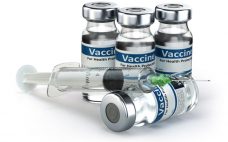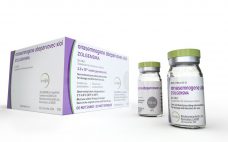Modular facilities could prove greater than the sum of their parts with innovation increasing biopharma interest in off-the-shelf plants. An increasing number of drug industry announcements about new plants in recent years have emphasised the “modular” nature of the project. Pfizer, for example, opted for off-shelf-tech for the facility it set up in Hangzhou, China in 2016. The site, which won an ISPE award, makes biosimilars for the local market. Pfizer cited flexibility as a key motivation for choosing the…
Author Archives: Gareth Macdonald
Why freezing should be a hot topic for cell therapy sector
Cell therapy firms need to think about freezing earlier in process development according to an expert, who says optimized cryopreservation is key. Cell therapies have the potential to revolutionize medicine. For example, products like Yescarta and Kymriah can treat cancers more effectively and with fewer side effects than even the best chemotherapies. But unlike chemotherapies, cell therapies are highly susceptible to the temperature fluctuations that occur during transportation. To address this, developers protect their products using various methods, with cryopreservation…
COGS crisis: Cell therapy sector must rethink CMC says expert
The cell therapy sector faces a cost of goods sold (COGS) crisis and needs to get beyond the “product is the process” mind-set says Anthony Davies, CEO of Dark Horse Consulting. Cell and gene therapies have attracted a lot of attention in recent years. In part this is because drugs like Yescarta, Kymriah and Zolgensma have been approved as one-off cures. However, their cost – $373,000, $475,000 and $2.1m per vial in the US, respectively – has also seen them…
A booster shot for vaccines: Univercells working to cut production costs
Vaccines cost too much to make according to Univercells, which aims to have a novel platform ready for commercial-scale production by 2020. Vaccines have had a dramatic impact on human health. One recent study argued that vaccine development “represents humankind’s most important and successful endeavor… over the last 200 years” [1]. Many diseases that caused millions of deaths in generations past have been stopped in their tracks by industry-supported vaccination programmes run by entities like World Health Organization (WHO), UNICEF and…
Bemoaning bottlenecks? Put a cork in it! Downstream techs better than ever
Innovative methods and techs have reshaped downstream operations says an industry expert. If you Google “biopharma” and “bottleneck” most results will be articles suggesting upstream technologies have improved faster than those downstream. But the idea of a “downstream bottleneck” is something of a misnomer says Tom Ransohoff from BDO. Instead he argues the upstream gains reflect where innovation efforts have focused. “When antibody and protein titers in mammalian cell culture systems were less 1 g/L several decades ago, the capacity…
Politics, patents and pricing: the future of the US biosimilars market
In the US the ongoing political debate about patents and prices will determine the long-term viability of the US biosimilars market, says an industry expert. The US biosimilar drug market was established in 2015 with the approval of Zarxio, Sandoz’s version of the Amgen drug Neupogen (filgrastim). Zarxio quickly established itself – the drug accounted for 45% of all the short-acting filgrastim used in the US last year. In contrast, the wider market has been slow to develop. Legal complexity…
Single-use techs are garbage, eventually, and that’s great for biopharma
Biopharma is starting to use single-use technologies more widely but understanding the pros and cons is vital say experts. The key characteristic of any single-use technology is its disposability. Being able to throw away rather than clean equipment after use is a major benefit. Cleaning a stainless steel system takes time and money says Andrew Sinclair, founder of Biopharm Services. “Cleaning a typical stainless steel system can be complex as the equipment and associated pipework needs to be cleaned together…
Zolgensma: We all know the price, but how is it made?
Making Zolgensma, the new “world’s most expensive drug,” is a month-long process that depends on vector tech licensed from Regenxbio. Zolgensma is a gene therapy. It is designed to halt progressive spinal muscular atrophy (SMA) – motor neurone loss and muscle wasting – in people who have a defective version of the gene SMN1. The drug addresses the underlying causes of SMA according to Novartis spokesman Eric Althoff. He told us, “Zolgensma provides a functional copy of the human SMN…
Costs and quality will shape cell and gene therapy tech development
Cell and gene therapies as well as wider industry desire for cost efficiency will shape bioprocessing tech innovation, say experts. Biopharma interest in cell and gene therapies is increasing. Products like Kymriah, Luxturna and Yescarta are the tip of an R&D iceberg according to PhRMA, which says around 300 such treatments are in development. The trend has been well received, with various groups suggesting it will yield treatments for untreatable conditions (see here, here and here, for examples). Investors have…
Making rare disease successes more common
Complex pathologies and small patient populations make rare disease R&D difficult according to Alexion, which says recent FDA guidelines are welcome. At large biopharma firms, rare disease drug R&D projects are becoming common. Their high revenue potential combined with IP advantages afforded to such products makes them an attractive focus for developers. For example, orphan drug designation entitles firms to reduced fees, tax breaks for trials and extended market exclusivity. Investors also welcome such designation. According to one study, developers…










